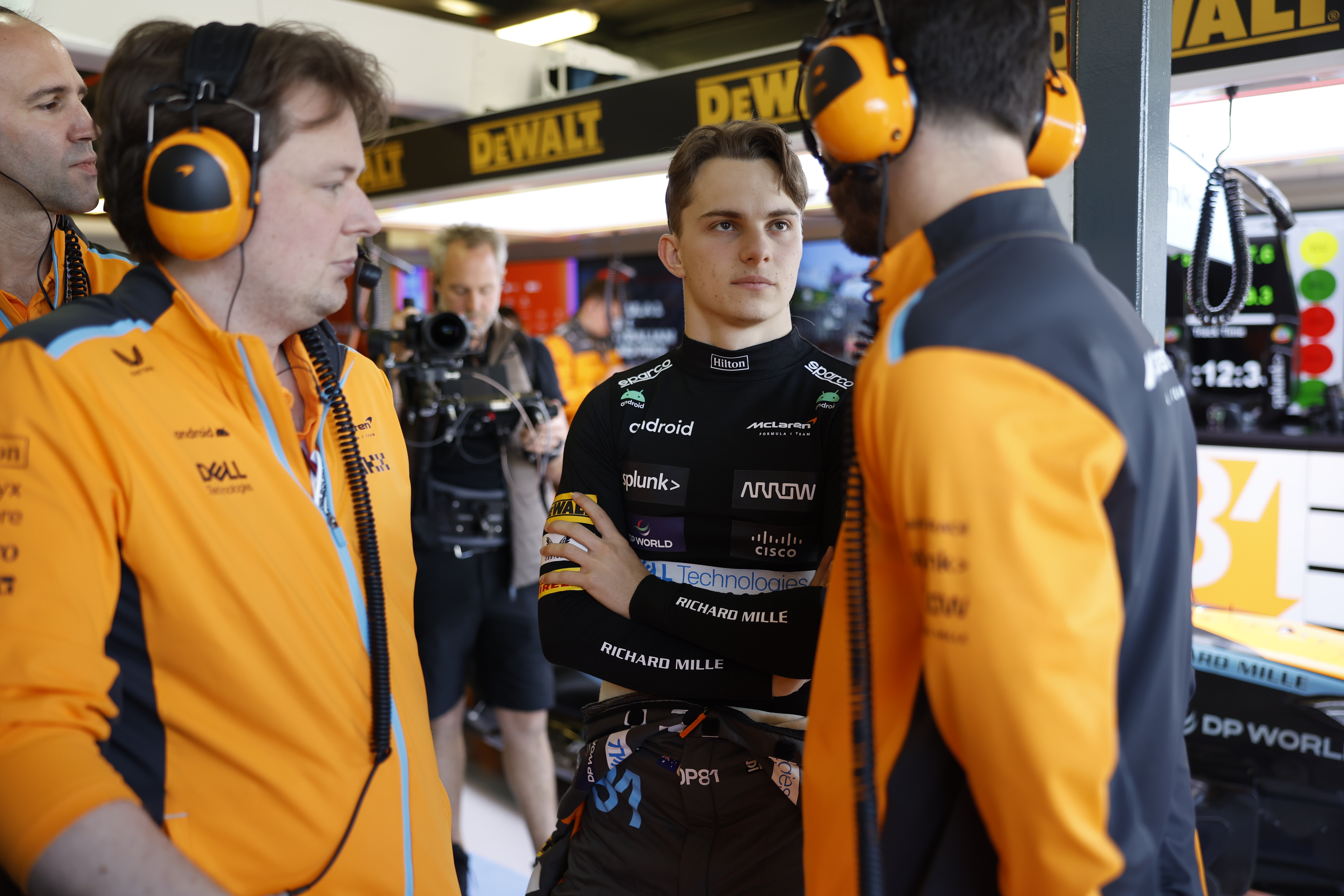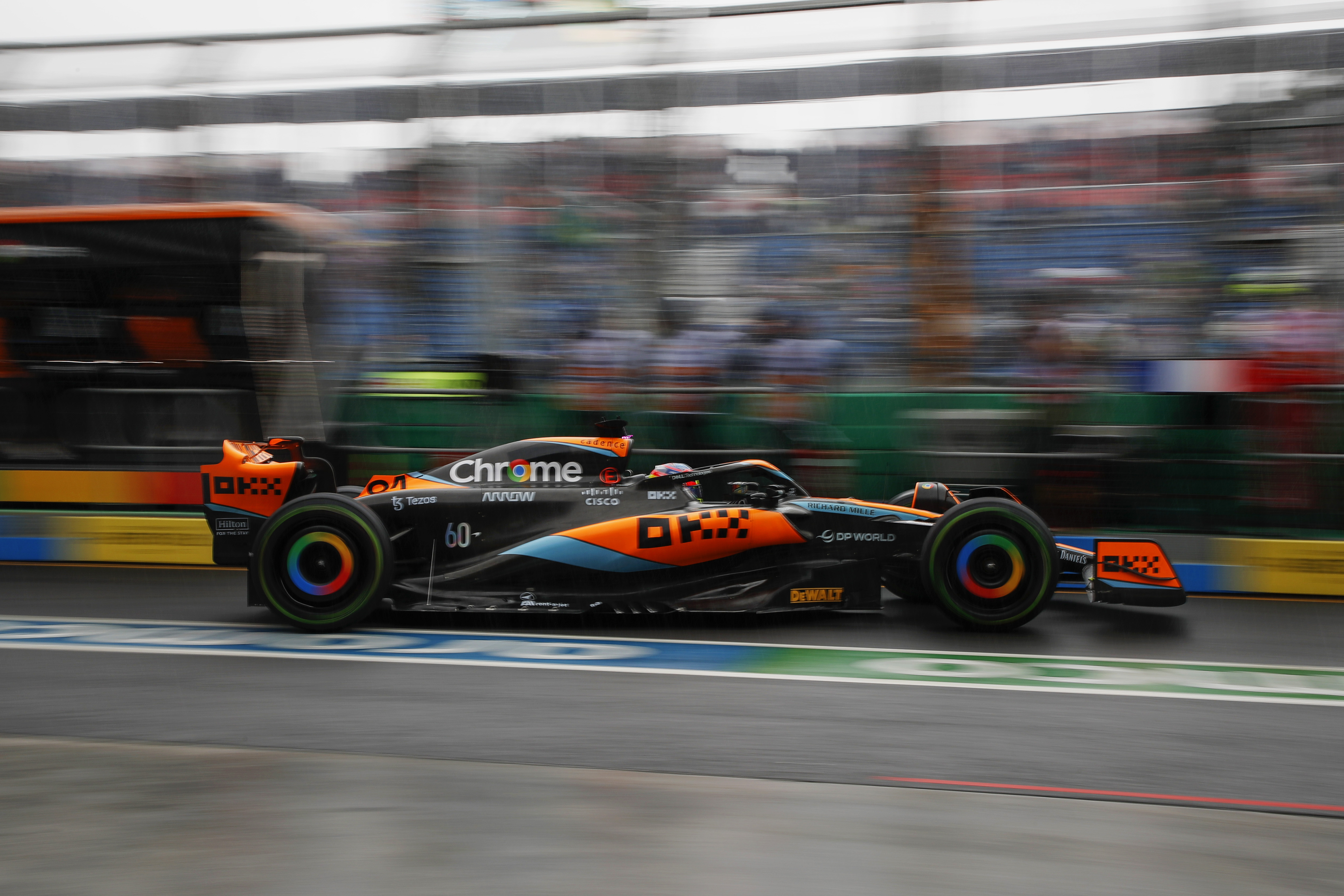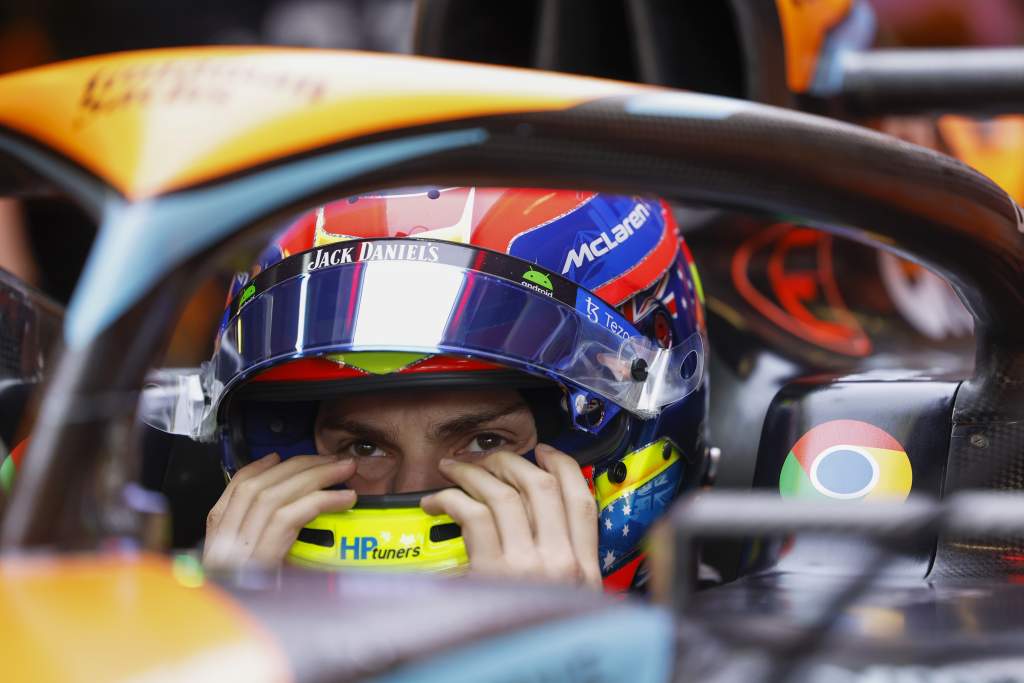Up Next

McLaren is convinced Oscar Piastri is on a path to becoming one of Formula 1’s best drivers.
Before the rookie had even started a grand prix, McLaren was not afraid to zero in on specific characteristics and extrapolate that into major potential.
Team principal Andrea Stella is particularly enamoured with Piastri’s capacity to identify and execute opportunities to improve while he’s in the car – “the definition of talent”, he said back in Bahrain, ahead of Piastri’s rookie weekend.
“Formula 1 is a very, very competitive game,” Stella said at the time. “He just has to go through his own trajectory and I’m sure the final destination will be one of the best drivers on the grid.”
Three races hardly make for the required sample set to start drawing definitive conclusions about that either way. However, it is a useful, early signpost for whether Piastri is progressing in that direction.
The results are hardly remarkable, with two ill-fated races cancelled out by a fortunate boost into the points in Australia, but the underlying data has left McLaren massively encouraged.
This is rooted in very good adaptation and execution. Piastri talked early in the year about needing to adjust his driving style to the McLaren and after three qualifying sessions his approach appears encouragingly close to Norris in key areas like braking technique – something his predecessor Daniel Ricciardo was particularly weak at relative to Norris.
This has manifested in Piastri being almost a match for Norris in all types of corners. There has been no obvious weakness over the first three tracks of the season. At worst he tends to bleed a little bit of time – a matter of hundredths of a second per corner – over a lap, but even then there will be some parts where he is faster.
In Bahrain, a snap through Turn 2 exaggerated Piastri’s deficit to Norris but even there he ended the lap quicker in the medium/high-speed final sector.
In Saudi Arabia, there is even a suggestion Piastri’s consistently good speed through the final corner contributed to Norris’s costly hit with the wall, as Norris was marginally on the back foot for once.
And in Australia, where the track surface is less forgiving of cars that lack grip or drivers that get slightly optimistic, a minor braking misjudgement at Turn 11 was the difference.
Harshly, there is a small trend of underachievement here. Generously, this might be considered fairly typical for a rookie. What McLaren is more focused on is that performance-wise, Piastri is where he needs to be.

Getting to this level would not be possible without an excellent grasp of more than just the fundamentals.
Piastri’s technical knowledge is said to be excellent and coupled with a very precise feel for the car’s behaviour, he’s already exhibiting Norris levels of feedback and understanding. It has left McLaren feeling like it does not actually have a rookie in the car – bringing to mind the cliched ‘mature beyond his years’ praise for such a young driver.
While every F1 driver clearly understands the ‘basics’ of driving well, sensitivity of feeling behind the wheel is something that varies from person to person. The range of talents and attributes from drivers, especially rookies, varies immensely.
Piastri is not perfect and is far from the finished article but his technical ability is clearly a major strength, and bleeds into everything else he does.
He has already shown impressive comprehension of the car’s behaviour, which allows him to identify cause and effect while driving. This is linked to Stella’s favourite trait, that Piastri doesn’t always need to wait to get back to the garage, to see the data, or to be told where to improve.
That’s something McLaren has seen for a long time already. It goes back beyond pre-season testing, beyond even the Abu Dhabi test last year or the 2021 car running that was Piastri’s first in-car experience with McLaren. It was apparent on his first day in the simulator.
“It was quite interesting to see his awareness as to how much more performance was at stake, while driving,” says Stella.
“Just this awareness, that ‘I think I can push a little bit more there’, and ‘give me a couple more laps’ and then you’ll see that [step].
“Normally, there’s some drivers that you might have to say, ‘OK, let’s stop, let’s look at some overlays, you can do something different here’ – you need to interact.
“He provides the information [himself]. His own processing was quite outstanding, without support from external information or data.”

Piastri’s grasp of what’s going on from inside the car is good enough to give him a head start in lap-by-lap improvements that is not something every driver enjoys. It’s impossible not to draw another parallel with Ricciardo at this point.
One of Ricciardo’s biggest struggles was just not grasping what the car was doing, or why. He talked openly about this. Either he could not do what Norris was doing or he did it, and didn’t understand how. There was a fundamental disconnect there.
Piastri is not suffering from the same problem. That manifests itself in a closer performance profile than Norris vs Ricciardo and unsurprisingly goes deeper. When studying his data relative to Norris in qualifying – braking points, braking traces, throttle application, etc. – there is a similarity in technique and execution that was rarely seen in the last two years.
And where there are gaps that need further scrutiny – and there are, because it’s not like Piastri is always on Norris’s level – the other thing that’s different is that Piastri can translate that into a clear step on his next run.
He has enough control of the situation to, as Stella puts it, “cash in on these opportunities”. There are fluctuations from weekend to weekend – he made small mistakes in one corner in both Bahrain and Australia qualifying that massively exaggerated the final gap – but overall the improvement curve is on a positive trend.

We may tentatively conclude that Piastri has built a very good platform to progress from. There are clear signs he can do things that Ricciardo couldn’t, he’s keeping Norris on his toes, and the high points speak for themselves.
The early signs are that Piastri will soon start evening out his qualifying performances, piece things together more consistently, and deliver on the obvious potential of the first few weekends.
He needs to do that because Norris is, generally, doing a better job at the moment of wrestling a downforce-light car on the limit. And he tends to recognise that his performances have been driver-limited, not car limited.
Identifying areas to improve, then actually improving them, has been the hallmark of Piastri’s rise to F1 in the first place. It is no surprise to see the same trait underpinning his early promise.
It also supports a good body of evidence that when (or if) McLaren finally starts to rectify the weaknesses of the MCL60, and makes it more competitive, he will be able to ‘go with’ the car’s improvement and push Norris for bigger and better results. McLaren is “absolutely” convinced by this.
“The difficulty is to keep up with the car when the car is difficult,” says Stella.
“Normally the better the car becomes the better the drivers can cope with it.
“I would say the fact that he’s doing well with this kind of car is very promising for when hopefully we’ll be able to deliver a better car.”









